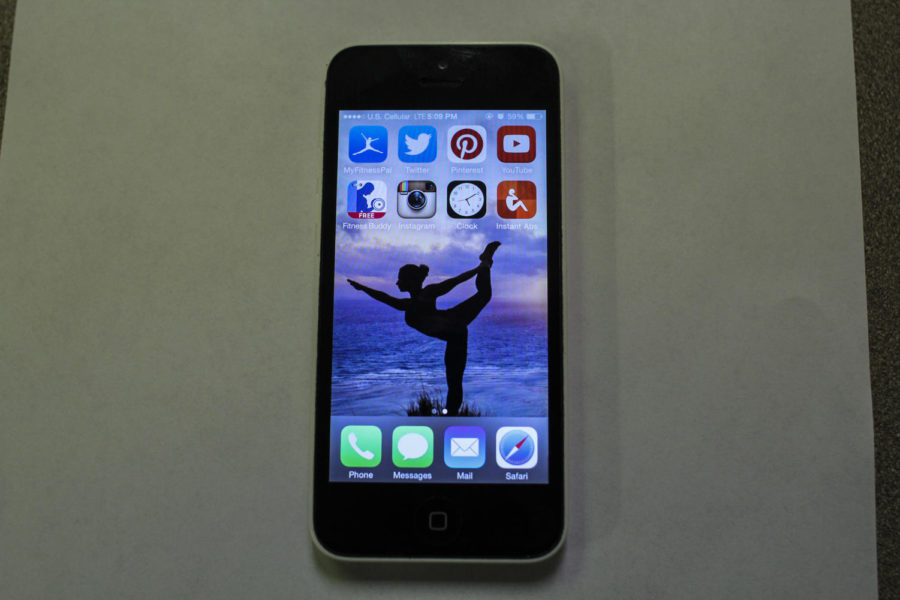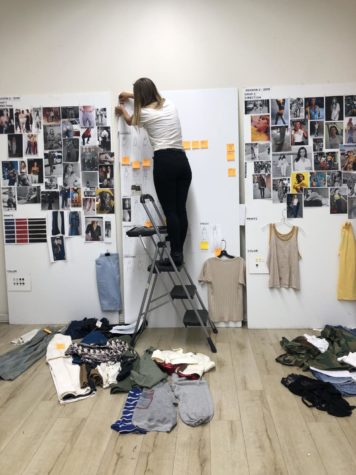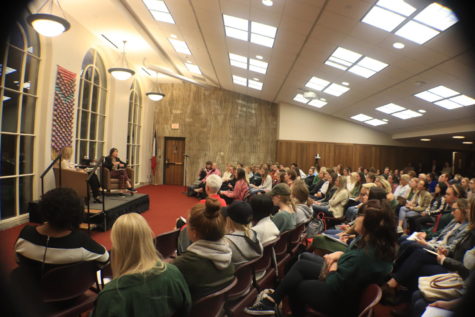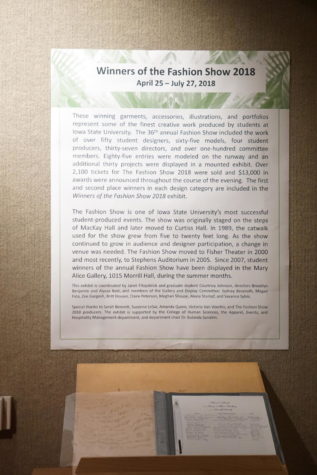Community fitness applications help keep user engaged in physical activity
Kelby Wingert/Iowa State Daily
Fitness and social media
March 3, 2015
At least 90 percent of you will have received a social media alert or stopped reading to refresh a newsfeed by the end of this article. In fact, try reading this whole article through without even a thought of social media.
Because the average person spends about 3.6 hours each day on social media alone, users have already given it the power to feed their minds, find their purpose, set their goals, guide their actions and motivate themselves.
So how does social media affect health and fitness?
“As humans, we constantly engage in social comparison and social media has both deliberately and subconsciously taken that to a whole new level,” said Panteleimon Ekkekakis, associate professor of kinesiology.
Just like seeing a friend in Hawaii on Instagram can inspire envy of their travels, seeing someone get results in the gym can encourage exercise in the viewer.
“I don’t want to stand next to my super fit friend and feel out of shape [in the gym] even if my friend has the best of intentions,” Ekkekakis said. “I know that everybody’s watching and that we are on display … and I don’t want to appear inferior to my friend … nobody does that voluntarily.”
He said the person who discovers where motivation for exercise comes from should win a Nobel Prize. However, the American Council on Exercise has found a direct correlation between social support and the outcome of one’s attitude toward continuing exercise.
Dr. Ekkakakis talked of studies looking at idealized images and how their negative effect is pretty clear. At the same time, social comparison can have a positive effect if one is in fact the idealized image that pops up on other viewers’ news feeds and finds happiness through that.
Scrolling through an array of vain-glorious women in a mirror half-naked on Instagram or seeing a Mens Health magazine cover with a man who is toned can either motivate or discourage someone from exercising. Even though some media outlets have unjustly defined having a pair of abs as healthy, it is up to the individual to decide whether these images are discouraging or an inspiration.
Because the current society is surrounded by media and importance of appearance, there could be an issue in differentiating the health benefits of exercise from appearance.
“I’m not convinced there is an intervention method where you can sit people down and change minds because the culture is so powerful … I think it’s a lost cause,” Ekkekakis said. “Go to the local book store and find the fitness or health section. Look at the magazine covers. For example, Mens Health [magazine]. Health, really? it’s not about health … it’s about abs.”
Problems for those using social media for health purposes can start when they set goals in alignment with unrealistic ideas and the visual stereotypes. On the other hand, setting smaller and more attainable goals will help build a stable foundation on which to grow.
“Start small and add little bouts of activity and eating healthy will eventually become more of a habit,” said Patricia Shadid, senior in kinesiology and health and social media chair of ExcerCYse Ambassadors. “[Social media] can be positive by keeping you accountable.”
For those trying to start a fitness routine or stay healthy, accountability is a significant part of continuing exercise. Because yes, there are those days for even the typical “gym rat” where going to the gym is the last thing on their mind. This is what often sets active people apart from mostly sedentary people — will power.
Two ISU alumni in mechanical engineering, Jake Smith and Brian Capesius, have recently created an iPhone app that will help students with accountability through social media.
The new app, “ScoreWithIt”, released on March 1 to the iPhone App Store, aims to connect students with friends in hopes of making exercise more social.
“We made ScoreWithIt for people like us who want to be healthy or fit but know how hard it is to get motivated and actually go workout,” Smith said.
One transformation in social media Smith and Capesius noticed while building the app was how social media first started off as fun and then started becoming truly useful.
“You don’t have to be a gym rat to live a healthy lifestyle or be the best you,” Capsius said. “No matter what level you’re at, it’s all about getting better each day and that’s one thing we hope to accomplish with our app.”

















